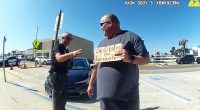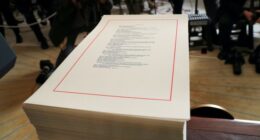Cyclone Alfred has hit Queensland’s outer islands and is forecast to cross the mainland between Maroochydore and Bribie Island before 12pm (local time).
The tropical cyclone – the first to hit south-east Queensland and northern NSW in half a century – has been downgraded to a category one system.
It is forecast to weaken below tropical cyclone strength as it makes landfall.
It is still predicted to bring gusts of up to 95km/h, heavy rain and life threatening floods.
Four million residents have been told to either evacuate or hunker down.
A man was swept away in floodwaters in northern NSW on Friday afternoon and remains missing.
Follow Daily Mail Australia’s live coverage of the cyclone’s movements.
Cyclone Alfred hits Queensland’s outer islands
More than a quarter of a million homes without power







